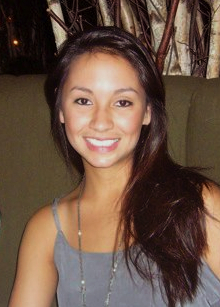May 28, 2010

With Asian American Pacific Islander Heritage Month about to end, I thought I'd write a bit about the terms we choose to describe our identity. Like other ethnic groups, the labels we use for ourselves seems to be always evolving. Hispanic evolves into Latino; Negro to Black to African American; Native American to American Indian. Asian Americans are sometimes called Asian Pacific Americans, sometimes Asian Pacific islander American, and sometimes Asian American Pacific islander. These labels lead to a crazy bowl of alphabet soup acronyms: AA, APA, APIA, AAPI.
I choose to say (and write) "Asian American" most of the time, but say "Asian American Pacific Islander" and use the acronym AAPI for formal references. Although organizations such as APIA Vote and APAs for Progress helped get Asian Americans involved in the political process, President Obama and the White House prefers AAPI, as in "
Asian American Pacific Islander Heritage Month." (Note that the poster shown here, from East Tennessee State University, calls it "Asian Pacific American Heritage Month.")
Earlier this month at an AAPI Heritage Month event sponsored by the Colorado Asian Roundtable, our friend emcee Kim Nguyen stumbled on "Asian American Pacific Islander" and I had to snicker. It's a mouthful, all right, especially when you say it over and over into a microphone. And even just saying "AAPI" repeatedly gets to feeling odd, as if the letters lose all meaning upon repetition.
As it happens, we may be on the cusp of a change in how we identify ourselves anyway.
The
Sacramento Bee the other day ran an interesting story that proposes that "Asian American" is fading off like the term "Oriental" before it.
"As Sacramento's growing Asian immigrant communities celebrated Sunday's Pacific Rim Street Fest, a growing number note that Asian American isn't a race and said they choose to identify by their ethnicity," the article stated. The excellent (required reading) group blog
8Asians picked up on the SacBee's story and expanded upon its theme of ethnic Balkanization.
Asian Americans are increasingly identifying more by their specific culture and ethnicity, and not so much as a larger, racially-linked group.
Like a lot of social change, this may be a generational swing.





 Johnson has been inspired by the work of hapa writer, filmmaker, artist, activist, standup comic and lifeguard (really)
Johnson has been inspired by the work of hapa writer, filmmaker, artist, activist, standup comic and lifeguard (really)  I've written before about
I've written before about  With Asian American Pacific Islander Heritage Month about to end, I thought I'd write a bit about the terms we choose to describe our identity. Like other ethnic groups, the labels we use for ourselves seems to be always evolving. Hispanic evolves into Latino; Negro to Black to African American; Native American to American Indian. Asian Americans are sometimes called Asian Pacific Americans, sometimes Asian Pacific islander American, and sometimes Asian American Pacific islander. These labels lead to a crazy bowl of alphabet soup acronyms: AA, APA, APIA, AAPI.
I choose to say (and write) "Asian American" most of the time, but say "Asian American Pacific Islander" and use the acronym AAPI for formal references. Although organizations such as APIA Vote and APAs for Progress helped get Asian Americans involved in the political process, President Obama and the White House prefers AAPI, as in "
With Asian American Pacific Islander Heritage Month about to end, I thought I'd write a bit about the terms we choose to describe our identity. Like other ethnic groups, the labels we use for ourselves seems to be always evolving. Hispanic evolves into Latino; Negro to Black to African American; Native American to American Indian. Asian Americans are sometimes called Asian Pacific Americans, sometimes Asian Pacific islander American, and sometimes Asian American Pacific islander. These labels lead to a crazy bowl of alphabet soup acronyms: AA, APA, APIA, AAPI.
I choose to say (and write) "Asian American" most of the time, but say "Asian American Pacific Islander" and use the acronym AAPI for formal references. Although organizations such as APIA Vote and APAs for Progress helped get Asian Americans involved in the political process, President Obama and the White House prefers AAPI, as in "

 The first single from
The first single from 
